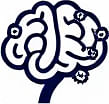The Supply and Demand Mental Model
 by Shanie Goodwin
by Shanie Goodwin
Supply and demand shapes decisions in economics and daily life, offering a simple way to analyze markets and behaviors. This mental model helps predict outcomes in business and personal choices, making it essential for effective problem-solving and strategy.

Supply and demand is a foundational concept that influences how we make choices in various aspects of life. This mental model explains the relationship between the availability of goods and the desire for them, helping individuals anticipate changes and respond effectively.
What Is Supply and Demand?
At its core, supply refers to the amount of a product or service available in the market, while demand indicates the quantity that consumers want to purchase. These two forces interact to determine prices and availability, creating a dynamic that affects everything from global economies to local decisions.
In practice, when demand exceeds supply, prices tend to rise, encouraging more production. Conversely, if supply outpaces demand, prices may fall, prompting adjustments in production. This interplay forms the basis for understanding market behaviors and can be applied beyond economics.
Applications in Business Strategies
Businesses often use this mental model to guide their operations. For instance, companies analyze supply chains to ensure they can meet customer needs without overproducing. By forecasting demand through data and trends, organizations can optimize resources and improve efficiency.
In marketing, understanding demand helps firms identify opportunities. A product with growing demand might signal a chance for expansion, while declining demand could indicate the need for innovation. This approach allows professionals to make informed decisions that align with market conditions.
Ties to Psychology and Cognitive Development
From a psychological perspective, supply and demand influences how people perceive value. Scarcity, a key element of this model, can heighten the appeal of an item, affecting consumer behavior and decision-making processes. This ties into cognitive development, as individuals learn to evaluate options based on availability and need.
For lifelong learners, recognizing these patterns fosters better critical thinking. It encourages evaluating situations not just emotionally but through logical analysis, such as assessing whether a resource is plentiful or rare. Over time, this builds stronger problem-solving skills applicable in personal finance or career planning.
Everyday Examples and Practical Use
Consider the housing market, where supply and demand play a clear role. In areas with high demand and limited supply, prices soar, making it challenging for buyers. Homeowners might use this insight to time their sales or purchases effectively.
In personal life, this model applies to time management. If your schedule has limited slots (supply) but many tasks (demand), prioritizing becomes essential. By applying the principles, you can allocate resources more effectively and reduce stress.
Practical tips include tracking trends in your field. For example, monitoring job markets can reveal where demand for skills is rising, guiding career choices. Another tip is to experiment with small-scale applications, like budgeting groceries based on seasonal availability.
- Track local market changes to spot opportunities.
- Use data tools to predict shifts in supply.
- Apply the model to daily routines for better efficiency.
The Role in Decision-Making
This mental model enhances decision-making by providing a framework for evaluation. When faced with choices, consider both the supply of options and the demand for them. This balanced view helps avoid impulsive actions and promotes thoughtful strategies.
In education, teachers might use supply and demand to explain economic concepts, aiding students in developing analytical skills. Professionals in various fields, from healthcare to technology, rely on it to anticipate needs and allocate resources wisely.
Limitations and Considerations
While powerful, this model has limitations. It assumes rational behavior, yet human emotions can disrupt patterns. External factors, like regulations or natural events, can alter supply unexpectedly, requiring flexibility in application.
To address this, combine the model with other tools for a fuller picture. Over time, integrating it into your thinking process can lead to more resilient strategies and adaptive responses.
In summary, supply and demand offers a versatile lens for examining the world. By incorporating it into daily practices, individuals can enhance their cognitive toolkit, leading to smarter choices and greater success.
